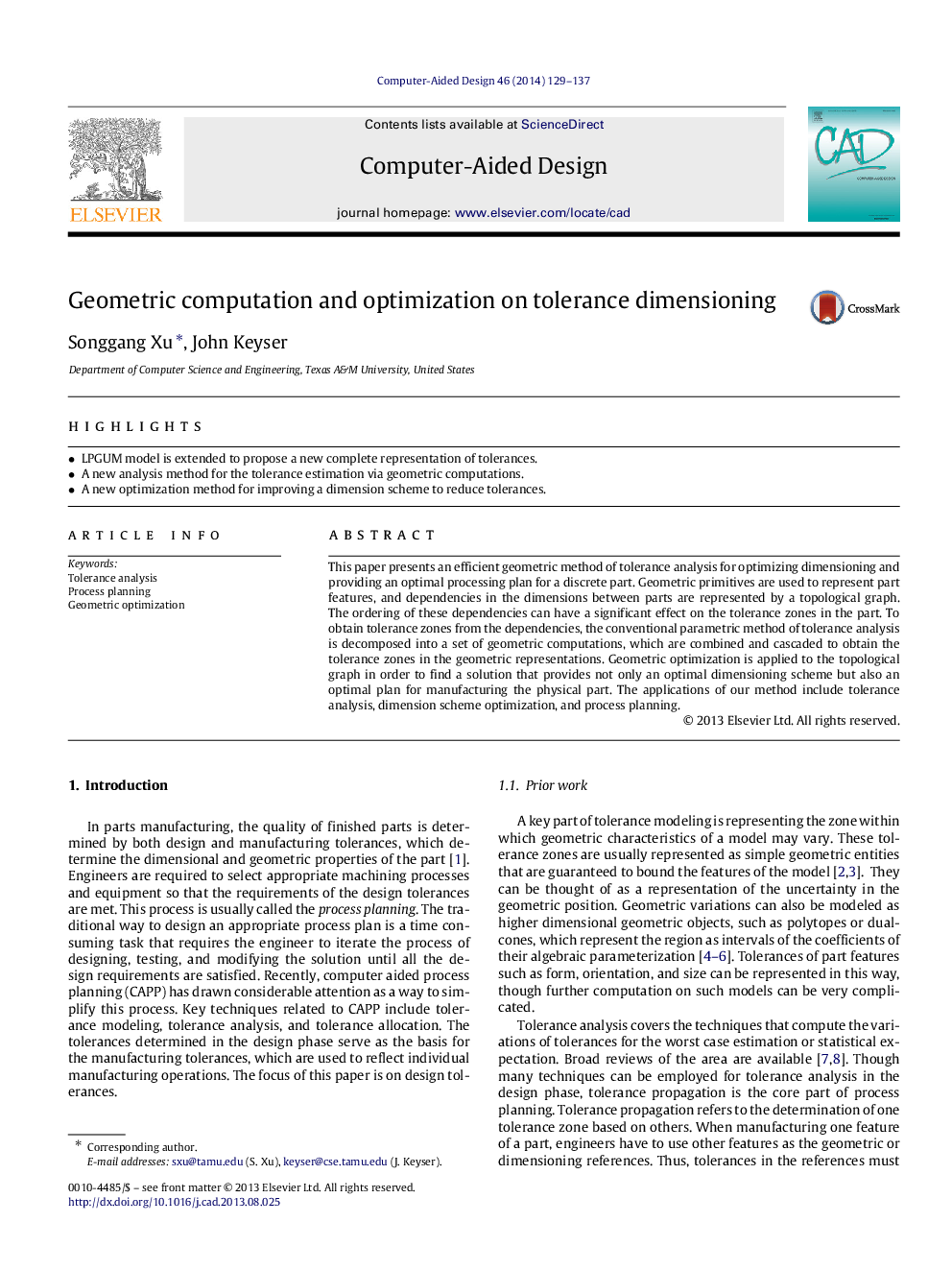| Article ID | Journal | Published Year | Pages | File Type |
|---|---|---|---|---|
| 439464 | Computer-Aided Design | 2014 | 9 Pages |
•LPGUM model is extended to propose a new complete representation of tolerances.•A new analysis method for the tolerance estimation via geometric computations.•A new optimization method for improving a dimension scheme to reduce tolerances.
This paper presents an efficient geometric method of tolerance analysis for optimizing dimensioning and providing an optimal processing plan for a discrete part. Geometric primitives are used to represent part features, and dependencies in the dimensions between parts are represented by a topological graph. The ordering of these dependencies can have a significant effect on the tolerance zones in the part. To obtain tolerance zones from the dependencies, the conventional parametric method of tolerance analysis is decomposed into a set of geometric computations, which are combined and cascaded to obtain the tolerance zones in the geometric representations. Geometric optimization is applied to the topological graph in order to find a solution that provides not only an optimal dimensioning scheme but also an optimal plan for manufacturing the physical part. The applications of our method include tolerance analysis, dimension scheme optimization, and process planning.
